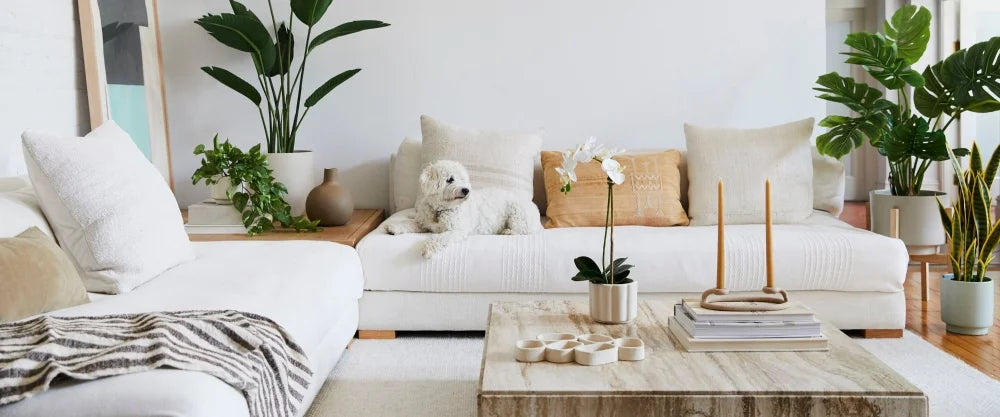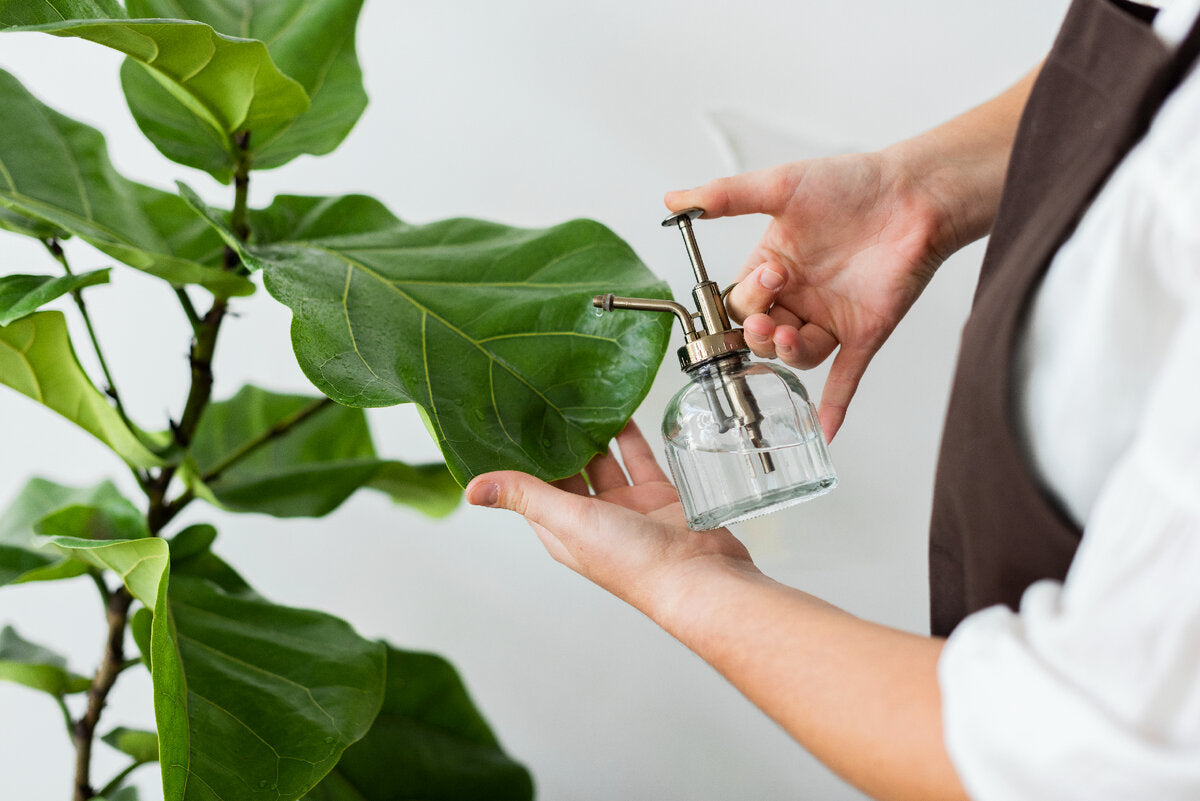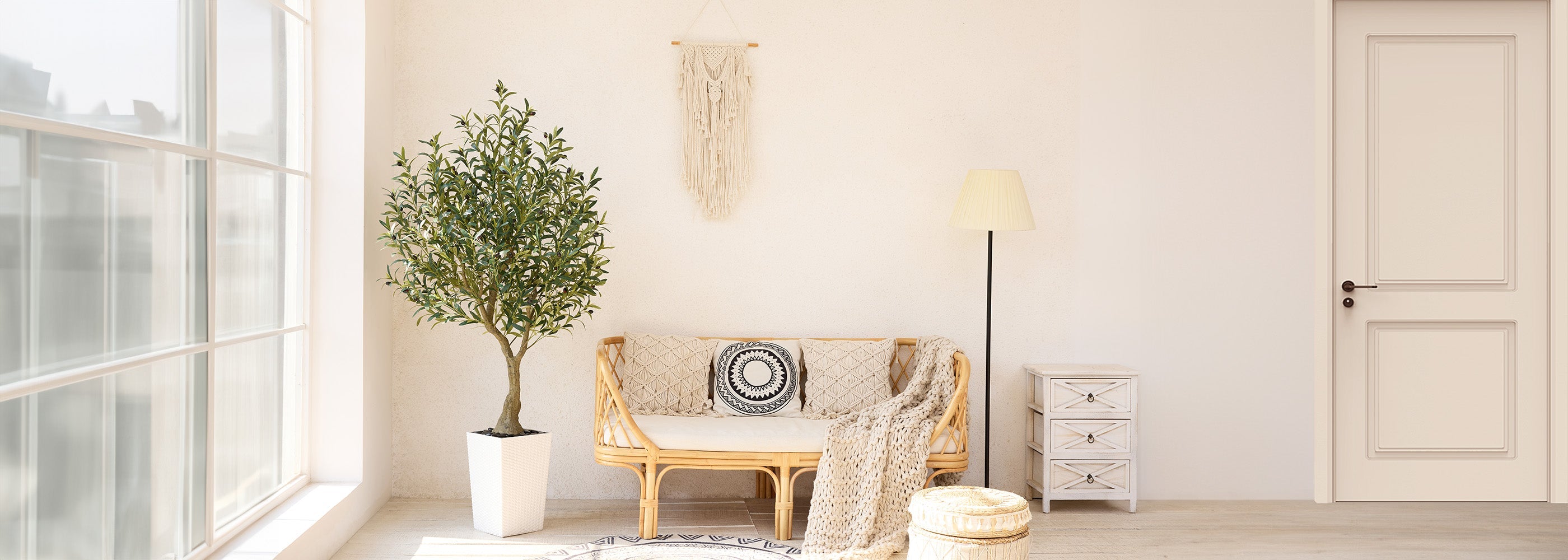Ever considered bringing some life into your space with a tree? Since I’m not exactly a plant expert when it comes to indoor greenery, I’m talking about faux trees. Today, let’s dive into what to look for in an artificial tree and how to style it to achieve a more natural look.
I recently added an artificial olive tree to our living room, and it instantly made the whole room look so much better!
We decided to place the tree in a corner of our living room near a window, and that really enhanced its authenticity!
Artificial trees have come a long way in recent years, with their lifelike appearance that closely mimics real ones. They now look so realistic that calling them ‘fake’ feels almost unfair—today, they're truly in the 'faux' category!
Why Choose an Artificial Indoor Tree?
There are many great reasons to invest in an artificial indoor tree. Here are just a few...
*No need for watering like live plants or trees
*They won’t die (perfect for people like me who treat real plants like temporary flowers)
*Safe for pets—no leaves to drop that could harm them
*No time spent pruning, repotting, or cleaning up fallen leaves or spilled soil
*Ideal for homes with kids or allergy sufferers
*Look beautiful even in low-light rooms
*Stay looking great for years
There are plenty of reasons to choose a faux plant to bring an organic feel to a room.
Now, let’s discuss what to look for in an artificial tree and how to style or 'fluff' it to achieve a realistic look.
Key Features to Look for in a Faux Tree
I consider artificial indoor trees as accent decor for the home. Their main purpose is to bring life and an organic feel to a space, so we want them to look as realistic as possible! And we can help with that!
Not all artificial trees are created equal, though! Let’s filter out the ones that won’t make the cut and focus on the ones worth the investment.
Here’s what to look for in a faux tree that’s worth adding to your home!
Select Artificial Indoor Trees with Realistic Shapes

When shopping for an artificial tree, the first thing to consider is its overall shape—make sure it mirrors the natural form of a real tree.
Opt for a tree with a well-balanced shape that isn’t too bushy.
Individual Leaves Should Match the Right Size and Shape
One of the key factors to consider when choosing a faux indoor tree is whether the leaves look realistic.
Ensure that the leaves are the correct size and shape, just like those on a real tree.
For example, our olive tree has leaves that closely resemble the natural plant. Some leaves are darker and fully grown, while others are lighter and smaller, giving the appearance of newly sprouted leaves. This variety adds to the tree's overall realistic look.
Additionally, the backs of the leaves should have veins that closely resemble real leaves.
Here are a few more tips:
*Avoid trees with fake water droplets on the leaves or overly glossy, shiny finishes.
*If you're concerned about fading from sunlight, look for trees labeled as UV-resistant.
View Now:UV Resistant Artificial Trees for Indoor & Outdoor
Today, leaves are made from various materials like plastic, foam-coated plastic, silk, or polyester. Choose the material that gives the leaves the most realistic appearance.
Branches and Stems Should Be Positioned Naturally
It’s essential to choose artificial trees with wired branches, stems, and leaves that can be bent and shaped to resemble a real outdoor tree.
Avoid trees with stiff, straight stems that can’t be adjusted, as these will never look realistic.
Look for branches with natural variations in shape and thickness, and opt for trees with slimmer stems and well-formed leaves.
We want the branches to fool even the most discerning eye.
The Trunk of a Faux Tree Should Appear Realistic
One clear sign that a tree is artificial is a poorly designed trunk.
Most real indoor trees have slender trunks or small clusters and splits of even thinner trunks. Look for the same characteristics when choosing a faux indoor tree.

Tips for Styling a Faux Indoor Tree
You don’t have to be a horticulturist to style an artificial tree and make it look more realistic—just a few simple tips will do the trick!
Most trees arrive in a large box, and the branches and leaves are usually compressed together near the center.
I was actually surprised by how great our tree looked straight out of the box. It needed a little shaping, but the branches and leaves were in great condition.

Here are some simple tips I used to style our artificial tree and make it look more realistic.
Begin with the Shape
The first step in ‘fluffing’ your faux tree to make it look more realistic is to separate the branches and ensure the central branch is straight. This will help begin shaping the tree.
Shape the Bottom Branches, Stems, and Leaves

After shaping the main branches, start at the bottom and gently pull the lower branches out from the trunk. Shape each stem and leaf individually.
It’s important to work around the tree as you go, adjusting from different angles.
For reference, it’s helpful to look at photos of real trees to understand how the branches, stems, and leaves naturally position themselves.
The branches, stems, and leaves should point in different directions, not all facing the same way.
Many branches grow from one side of the trunk or the other, so use that as a guide.
Work your fingers down each branch to bend the wire inside, and then do the same with the leaves. This will create a gentle curve and a more natural look. You can give some stems and branches more of an arch, just like you would see in a real tree.
If you’re not happy with how a branch, stem, or leaf bends, you can easily straighten it out and try again.

Take your time to ensure each leaf looks perfect.
Work from the Bottom Up

Continue working your way up the tree, repeating the process. As you reach the top, observe how a real tree looks—do the branches spread out or do the top branches stay upright?
Focus on bending the branches, stems, and leaves to follow their natural shape.
Shape the Top of the Tree

Before styling the top of the tree, decide which side will face the room.
Style the top so it looks its best from the front.
For our ficus tree, there was one longer stem at the top. I carefully bent it to the left, keeping it mostly upright, and gently curved the stem and leaves for a more natural look.
Choosing the Perfect Pot

The right pot can really complete the look of a faux tree. Choose one that suits the size of the plant. Remember the principle: you want a container that’s just the right fit—not too small or too large. It’s worth testing out a few different pots to find the perfect match for your faux tree.The right pot can also add texture and style to your space.
Here are four popular options for tree containers:
*A large ceramic pot
*Baskets
*A pottery planter
*A cement urn
Our tree came with a beautiful pottery container that was just the right size. Instead of a typical dirt cover, it was topped with faux moss, which added a nice designer touch.
Take a Second Look at Your Tree
Now that you've shaped and styled your tree, take a moment to give it a final look and ensure it’s just the way you want it.
Adjust the branches, stems, and leaves to create a balanced, pleasing appearance, paying extra attention to the top of the tree.
How to Care for and Clean an Artificial Indoor Tree

Like anything in our homes, an artificial tree will collect dust over time. Regular dusting with a feather duster (my preferred tool) or other cleaning tools like a Swiffer is a good idea. Just be gentle to avoid disturbing the tree’s shape.
Popular Types of Artificial Trees
There are many types of artificial trees, but these are some of the most popular right now:
Fiddle leaf fig tree
Ficus tree
Palm tree
Faux olive tree
Traveler’s palm tree
Areca palm tree
Paradise palm tree
Now that you know how to choose and style a faux indoor tree for a more realistic look, here are a few you might like...





















Leave a comment
This site is protected by hCaptcha and the hCaptcha Privacy Policy and Terms of Service apply.